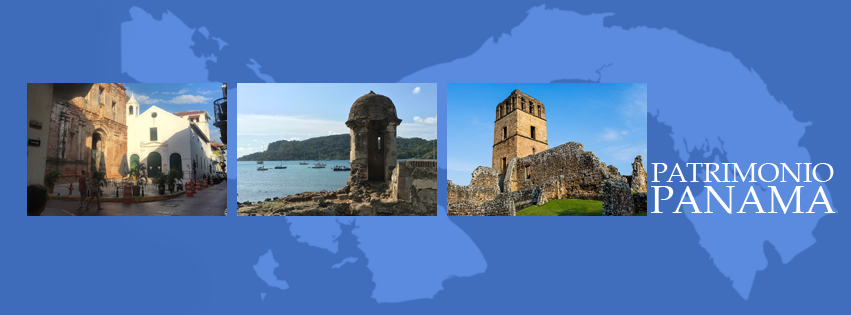This Week, the World Heritage Centre has updated once again data regarding the Panamanian property inscribed on the World Heritage List, “Archaeological Site of Panama Viejo and Historic District of Panama”, in order to include under the property's entry all decisions made by the World Heritage Committee about the delicate situation of said property, with emphasis on the Historic District (Casco Antiguo) of Panama City.
They are two Decisions:
1. Decision 37COM 7B.100
Archaeological Site of Panama Viejo and Historic District of Panama (Panama) (C 790bis)
This decision, previously discussed in another article in this blog (click here to read the article), refers primarily to the impact the maritime viaduct Cinta Costera 3 has exerted on the value to the world as cultural heritage of the Historic District of Panama (outstanding universal value). This Decision gives a deadline to Panama until Panamanian post-election year (specifically, until 1 February 2015) for submit to consideration by the World Heritage Committee a significant modification to the boundaries of the property “Archaeological Site of Panama Viejo and Historic District of Panama” that would allowit to justify a revision of the Outstanding Universal Value of the property; without forgetting that the Cinta Costera 3 modified in an irreversible manner the relationship of the historic center with its wider setting (See points 5 and 6 of Decision 37 COM 7B.100). Although the property includes Panama Viejo and the Historic District (Casco Antiguo), is the latter that receives the emphasis of this Decision.
Link to the updated entry (in English) on the website of the World Heritage Centre, http://whc.unesco.org/en/decisions/5019.
Decision 37 COM 7B.100 is listed in the Information System of State of Conservation (SOC) under the following themes: Credibility of the World Heritage List, inscriptions on the World Heritage List, and Outstanding Universal Value.
The wider setting to which the decision refers includes the sea and the network of relationships between the sea, the port city of Panama, and its terrestrial connections, which are described in the following decision.
2. 37COM 8E
Adoption of Retrospective Statements of Outstanding Universal Value
The Decision 37 COM 8E adopts the Retrospective Statements of Outstanding Universal Value, including on its list the “Archaeological Site of Panama Viejo and Historic District of Panama”. The text adopted by this Decision is on the website of the World Heritage Centre of UNESCO, under this link, under the title, OUTSTANDING UNIVERSAL VALUE: http://whc.unesco.org/en/list/790 /
Allow me to provide you with an unofficial translation, here: Retrospective Statement of Outstanding Universal Value to the Archaeological Site of Panama Viejo and Historic District of Panama (UNOFFICIAL translation). It describes that the city was founded following the discovery of the Southern Sea; that the city was a first class imperial outpost; which was relocated after the fire of 1671, that the city was built on a peninsula; that said peninsula was chosen because it could be fortified in order to prevent enemy access by sea; that the city grew in importance by means of the imperial bullion route; that the city was a strategic location within the geopolitical dynamics in the heyday of Spanish imperial power; including its geopolitical importance recognized by Simon Bolivar, and other revealing aspects of the vital and unavoidable relationship of Panama City with the sea.
The deepwater port of Panama was located at Perico Island (one of the three islands at the entrance of the Panama Canal, where the Americans built a causeway that connects them to the mainland in order to protect the Panama Canal entrance), and its interaction with the port city was via boats and ships smaller in size; the Royal Court and the Royal Houses (they were located where now stands the Presidency of the Republic) were within the walls of Panama.
A revealing preamble to Decision 37 COM 7B.100 may be seen in the State of Conservation report prepared by the World Heritage Centre for consideration by the World Heritage Committee at its Session 37 COM of year 2013 (Click here, for the text in English; Click here, for the text in Spanish) . In the fourth paragraph under “Conclusions”, the report reads as follows:
“The World Heritage Centre and the Advisory Bodies underscore the negative visual impacts of the Maritime Viaduct that will adversely impact on and transform the setting of the Historic Centre. They further note that , the Maritime Viaduct is a structure of a very strong shape (.) with a high visual impact which does not integrate harmoniously with the Historic District and establishes an undesirable contrast with regard to its maritime context. They consider that the ability of the property to convey its Outstanding Universal Value, as a fortified settlement in a Peninsula and as a testimony to the nature of the early settlements, with a layout and urban design adapted to a particular context, are being adversely compromised. The urban layout and scale and the relationship between the city and its setting, attributes crucial to the understanding of the evolution of the property, will also be adversely impacted.”
I provide below a picture showing the property before and after the construction of Cinta Costera maritime viaduct 3, featuring Google Earth's satellite photographs.

Cinta Costera Phase 3 Maritime Viaduct
Note:
Thanks to the transparency policies of UNESCO and its World Heritage Centre, all documents cited in this article of the Blog, Patrimonio Panamá are public information of open access for all around the world from UNESCO websites, and by means of the State of Conservation Information System (SOC), open to the public from 2012 (Click here to see related news: http://whc.unesco.org/en/news/962/).

